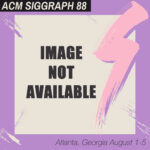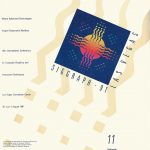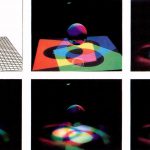François X. Sillion
Most Recent Affiliation(s):
- Centre Inria Grenoble-Rhône-Alpes, Researcher
Other / Past Affiliation(s):
- Ecole Normale Superieure, Senior Researcher
- French National Institute for Research in Computer Science and Automatic Control
- INRIA
Bio:
SIGGRAPH 2008
François Sillion is a senior researcher with INRIA (Institut National de Recherche en Informatique et Automatique), and director of INRIA’s Grenoble- Rhône-Alpes research center. He obtained a masters degree in Solid State Physics and a PhD in Computer Science as a student of the “Ecole Normale Supérieure” in Paris. He has held positions at Cornell University, CNRS and Ecole Polytechnique, and headed the ARTIS research project at INRIA.
Sillion published many papers in the fields of lighting simulation, real-time rendering, visibility and shadow techniques, focusing on the complementary issues of image realism and interactive control of visualization. He wrote a comprehensive book on the radiosity method, with Claude Puech (Radiosity & Global Illumination, Morgan Kaufmann Publishers, 1994).
François Sillion currently chairs the Eurographics working group on rendering, and is a member of the editorial board of the Computer Graphics Forum and ACM Transactions on Graphics journals. He co-chaired the technical program of the Eurographics’96 conference, the 1992 Eurographics workshop on rendering, and organized the 1993 Eurographics workshop on rendering. He delivered tutorials in several SIGGRAPH and Eurographics conferences, and invited presentations in several international conferences. In 2005 he was elected a fellow of the Eurographics Association.
SIGGRAPH 1999
François X. Sillion is a senior researcher at the Institute for Research in Computer Science and Control (INRIA), working in the iMAGIS project in Grenoble, France. He received undergraduate and graduate degrees (1986) in Physics at the Ecole Normale Supérieure in Paris, France, and a PhD in Computer Science from the University of Paris-Xi/Orsay (1989). Dr. Sillion worked for two years as a post-doc at Cornell’s Program of Computer Graphics, before joining France’s National Center for Scientific Research (CNRS), working first in Paris, then in Grenoble (1993). His research interests include the simulation of illumination for realistic image synthesis (he worked on several extensions to the radiosity method, including non-diffuse reflection and hierarchical techniques using clusters); progressive rendering techniques allowing a continuous trade-off between quality and speed for interactive applications; image-based techniques for the acceleration of rendering; and the application of computer graphics techniques to the simulation of non-visible radiation (botanical studies and radio waves). Dr. Sillion published, with Claude Puech, a comprehensive book on radiosity and global illumination, and co-authored several papers on all the above subjects. In addition to participating in many conference program committees, he is an associate editor of ACM Transactions on Graphics, serves on the editorial board of Computer Graphics Forum, and chairs the EUROGRAPHICS working group on rendering, organizing a yearly workshop on rendering.
SIGGRAPH 1992
François Sillion is a researcher at the Ecole Normale Supérieure, in Paris, France. He received an undergraduate education in math and physics, a graduate degree in Solid State Physics in 1986, and a Ph.D. in computer science in 1989 at the Ecole Normale Supérieure. From 1989-1991 he was a post-doctoral associate in the Program of Computer Graphics at Cornell University. He has co-authored several research papers on image synthesis, including several published in the SIGGRAPH proceedings. His research interests include light reflection modeling, global illumination algorithms, interactive simulation, and evaluation of image quality.
Learning Category: Jury Member:
Animation/Video(s):
Learning Category: Presentation(s):
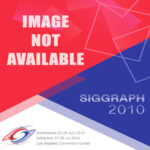
Type: [Technical Papers]
Programmable Rendering of Line Drawing From 3D Scenes Presenter(s): [Grabli] [Turquin] [Durand] [Sillion]
[SIGGRAPH 2010]

Type: [Technical Papers]
A meshless hierarchical representation for light transport Presenter(s): [Lehtinen] [Zwicker] [Turquin] [Kontkanen] [Durand] [Sillion] [Aila]
[SIGGRAPH 2008]

Type: [Courses]
Advanced Material Appearance Modeling Presenter(s): [Rushmeier] [Dorsey] [Sillion]
Entry No.: [02]
[SIGGRAPH 2008]
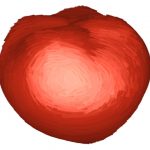
Type: [Talks (Sketches)]
A dynamic drawing algorithm for interactive painterly rendering Presenter(s): [Vanderhaeghe] [Barla] [Thollot] [Sillion]
[SIGGRAPH 2006]
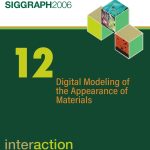
Type: [Courses]
Digital Modeling of the Appearance of Materials Organizer(s): [Rushmeier]
Presenter(s): [Dorsey] [Sillion]
Entry No.: [12]
[SIGGRAPH 2006]

Type: [Technical Papers]
A frequency analysis of light transport Presenter(s): [Durand] [Holzschuch] [Soler] [Chan] [Sillion]
[SIGGRAPH 2005]
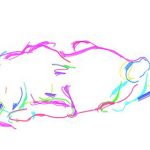
Type: [Talks (Sketches)]
Geometric Clustering for Line Drawing Simplification Presenter(s): [Barla] [Thollot] [Sillion]
[SIGGRAPH 2005]

Type: [Technical Papers]
Capture of hair geometry from multiple images Presenter(s): [Paris] [Briceño] [Sillion]
[SIGGRAPH 2004]

Type: [Technical Papers]
Billboard clouds for extreme model simplification Presenter(s): [Décoret] [Durand] [Sillion] [Dorsey]
[SIGGRAPH 2003]
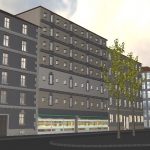
Type: [Technical Papers]
Instant architecture Presenter(s): [Wonka] [Wimmer] [Sillion] [Ribarsky]
[SIGGRAPH 2003]
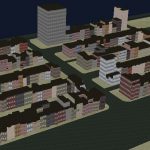
Type: [Technical Papers]
Conservative volumetric visibility with occluder fusion Presenter(s): [Schaufler] [Dorsey] [Décoret] [Sillion]
[SIGGRAPH 2000]

Type: [Courses]
Image-Based Modeling, Rendering, and Lighting Presenter(s): [Bregler] [Cohen] [Szeliski] [McMillan] [Sillion]
Entry No.: [35]
[SIGGRAPH 2000]
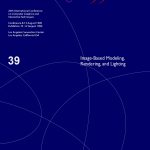
Type: [Courses]
Image-Based Modeling, Rendering, and Lighting Presenter(s): [Bregler] [Cohen] [Szeliski] [McMillan] [Sillion]
Entry No.: [39]
[SIGGRAPH 1999]
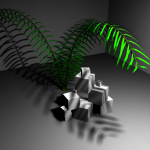
Type: [Technical Papers]
Fast calculation of soft shadow textures using convolution Presenter(s): [Soler] [Sillion]
[SIGGRAPH 1998]
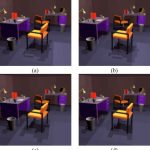
Type: [Technical Papers]
Interactive update of global illumination using a line-space hierarchy Presenter(s): [Drettakis] [Sillion]
[SIGGRAPH 1997]
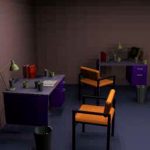
Type: [Technical Papers]
Feature-based control of visibility error: a multi-resolution clustering algorithm for global illumination Presenter(s): [Drettakis] [Sillion]
[SIGGRAPH 1995]

Type: [Courses]
Making Radiosity Practical Organizer(s): [Rushmeier]
Presenter(s): [Rushmeier] [Borel] [Cohen] [Dorsey] [Hanrahan] [Mckeller] [Recker] [Sillion] [Wallace] [Zembrot]
Entry No.: [22]
[SIGGRAPH 1993]

Type: [Courses]
Global Illumination Organizer(s): [Heckbert]
Presenter(s): [Heckbert] [Rushmeier] [Shirley] [Sillion] [Ward]
Entry No.: [18]
[SIGGRAPH 1992]

Type: [Courses]
Radiosity Organizer(s): [Cohen]
Presenter(s): [Cohen] [Campbell] [Greenberg] [Hanrahan] [Rushmeier] [Sillion] [Wallace]
Entry No.: [11]
[SIGGRAPH 1992]

Type: [Technical Papers]
A comprehensive physical model for light reflection Presenter(s): [He] [Torrance] [Sillion] [Greenberg]
[SIGGRAPH 1991]

Type: [Technical Papers]
A global illumination solution for general reflectance distributions Presenter(s): [Sillion] [Arvo] [Westin] [Greenberg]
[SIGGRAPH 1991]
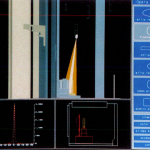
Type: [Technical Papers]
Design and simulation of opera lighting and projection effects Presenter(s): [Dorsey] [Sillion] [Greenberg]
[SIGGRAPH 1991]
Role(s):
- Animation Director
- Course Presenter
- Talk (Sketch) Presenter
- Technical Paper Presenter
- Technical Papers Jury Member

